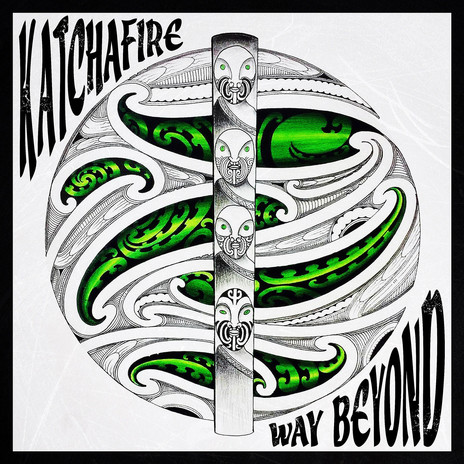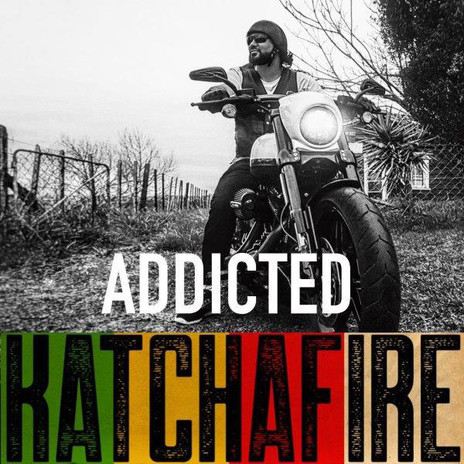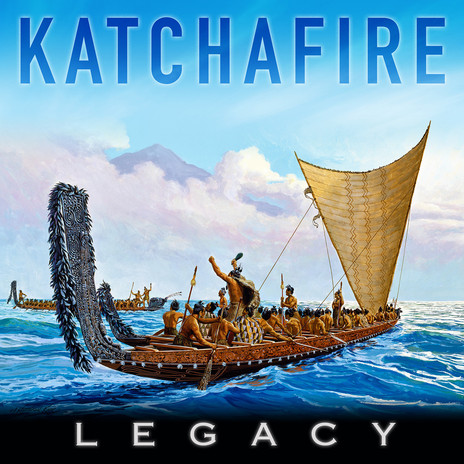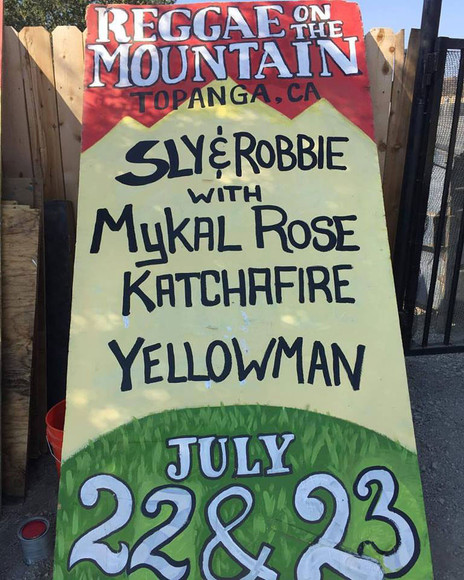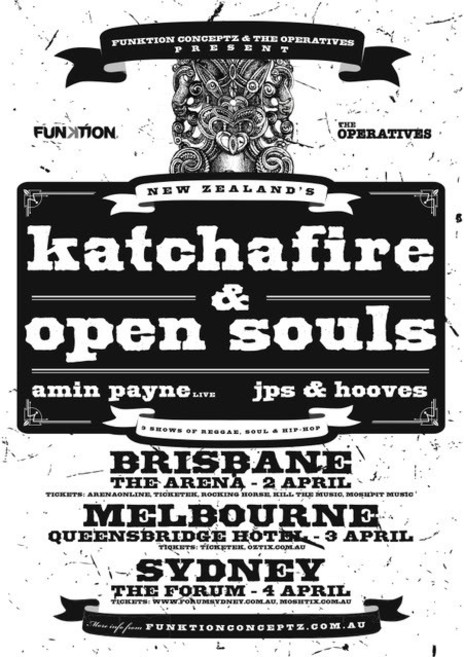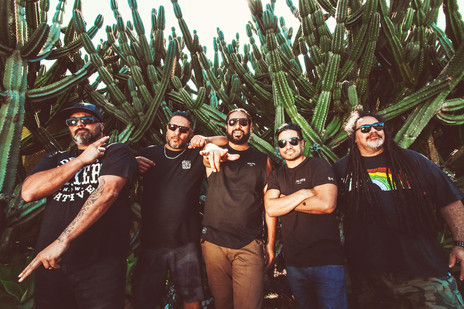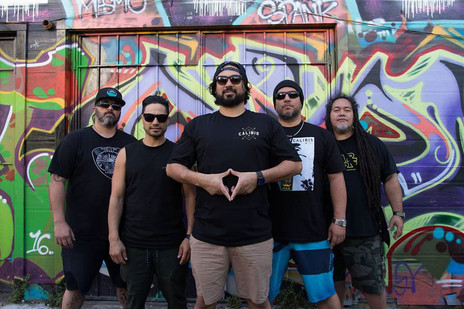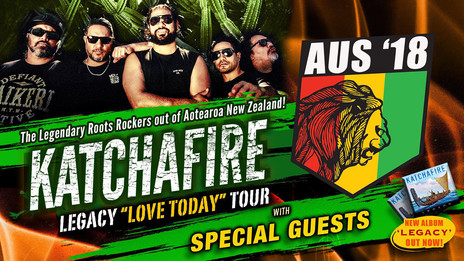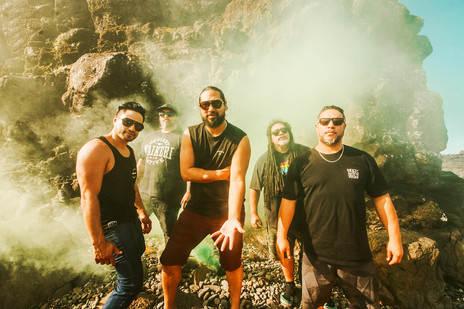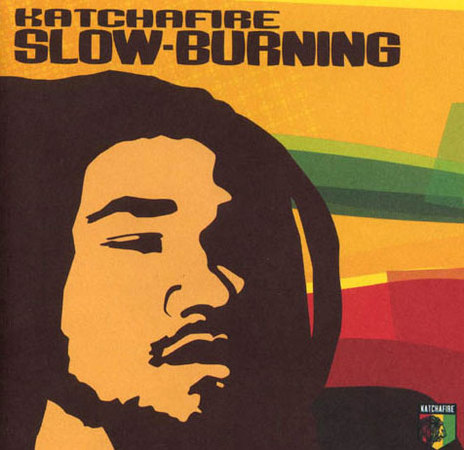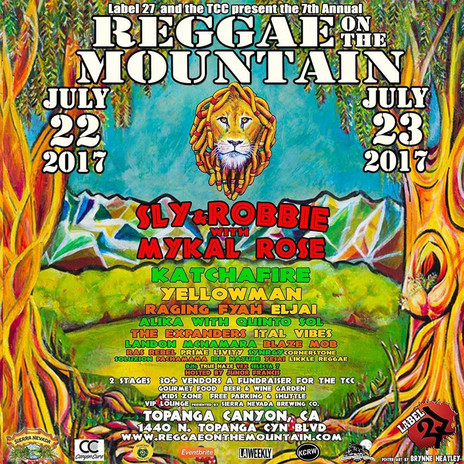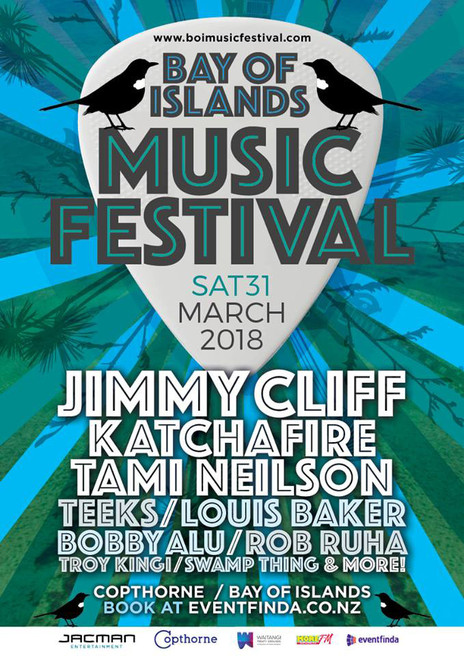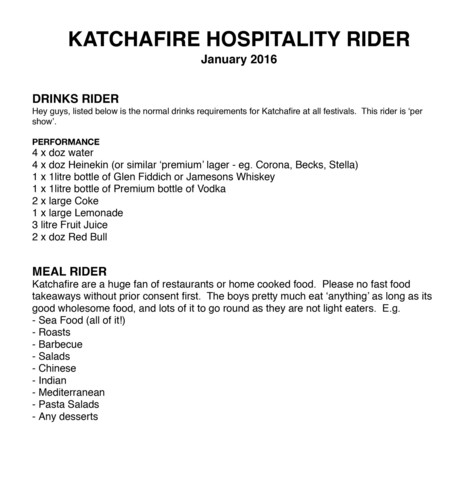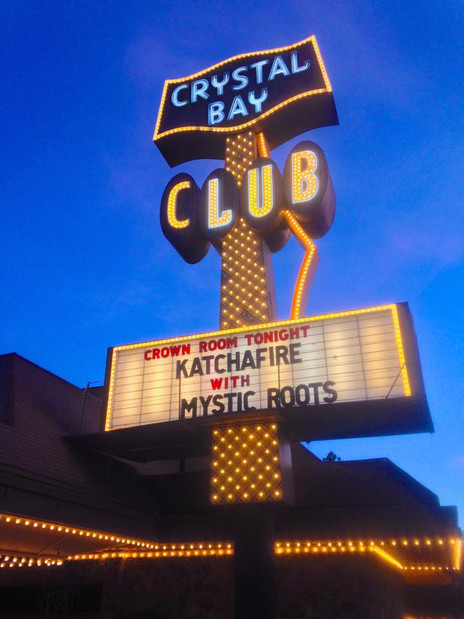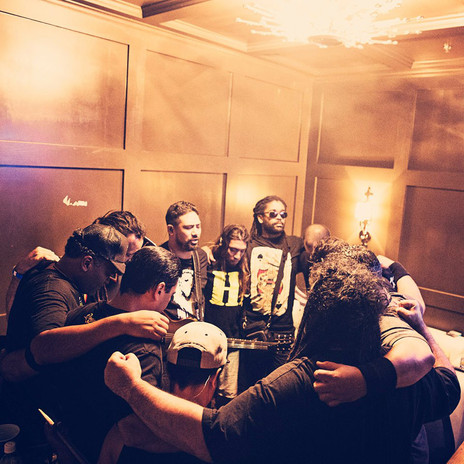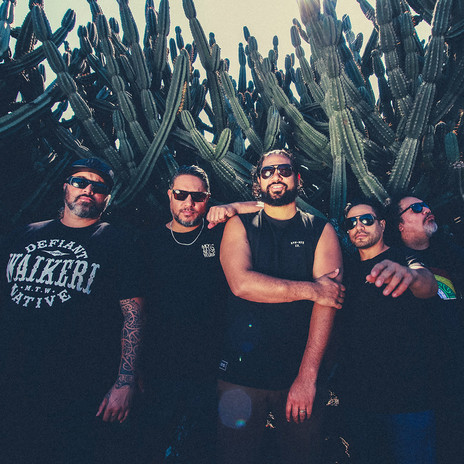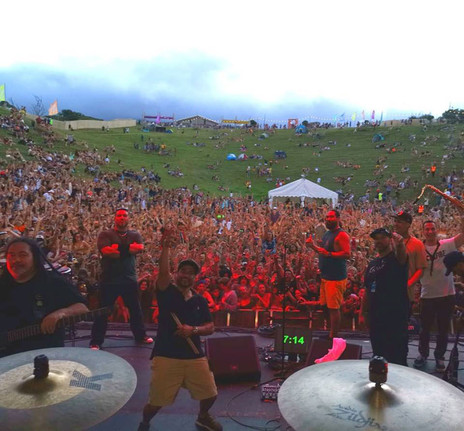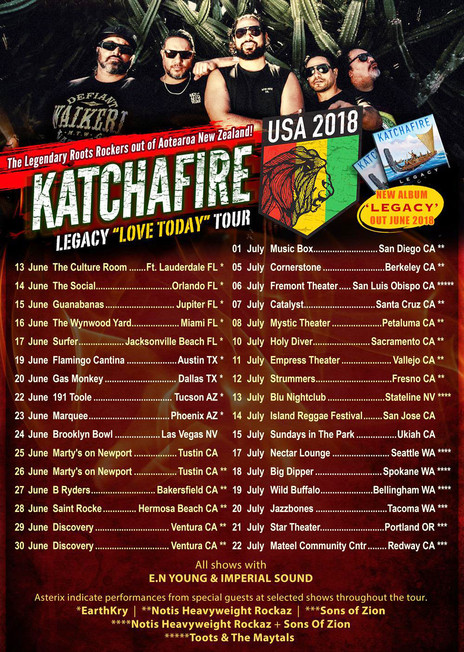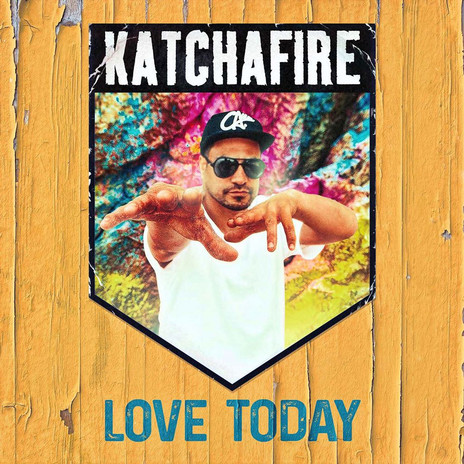In time, Katchafire stretched out to include other covers in their repertoire, about 130 reggae songs in total by Marley and bands such as Third World and UB40; they even did a version of 10cc’s ‘Dreadlock Holiday’. But it would be five years before Katchafire would include their own compositions in their set lists. By this stage were New Zealand’s most popular band exclusively playing covers.
Logan Bell later told radio host Alex Behan, “Three-four-five years playing covers every night [was] awesome schooling for playing our own tunes. Playing the toughest, most iconic reggae tunes every night you’re going to pick some stuff up and take it to your own songwriting.”
The band soon expanded to a seven-piece with the addition of saxophonist Jamey Ferguson and percussionist and vocalist Leon Davey. Tere Ngarua was replaced by Ara Adams-Tamatea. There have been periodic personnel changes, departures and returns, throughout the band’s career.
The tours were long, and the duration of katchafire’s shows became legendary.
Katchafire was initially managed by Grenville Bell, Logan and Jordan’s father. He established the exhausting performance schedules which the band still adheres to (and, within five years, Grenville would join the band as a guitarist). The tours were long, and the duration of the performances became legendary. In the early years, gigs lasting over four hours could be expected.
All this time spent together didn’t affect the Katchafire brotherhood, Logan Bell told the Dominion-Post’s Tom Cardy in 2003. “That’s the thing about the band, it’s pretty good camaraderie. It’s not to say that it’s always perfect. We have fights and that, but we are all really close. It’s like family, it’s fighting with a brother. We can get on the case and have a bit of a laugh about it later … It’s better than a day job.”
The family reference was more than a metaphor, with not just two Bell brothers in the lineup, but their father. Their mother also had a role in the touring party, collecting tickets at gigs. “She’s just the queen, man,” Logan told Cardy.
The long concerts gave the audience value for money. In 2003 tickets were never over $20 for those four-hour gigs. The kind of people in the audience didn’t want to spend more, said Logan. “If they have to pay $15 to get in, they have got to have at least $25 to get wasted. That’s been our mark and we’ve kept it at that and it’s worked for us. We are in the position that maybe we could go up five bucks or so because of the album release, but we’ve left ourselves room for those sort of changes.”
The serious foray into songwriting started in the early 2000s, and in 2002 the fledgling Mai Music, sister to the Mai-FM radio station, signed the band. The first single, ‘Giddy Up’ (written by Jamey Ferguson) set a high standard, reaching No.4 on the charts. It spent two months in the Top 10 and sold over 30,000 copies, becoming the biggest-selling New Zealand single of the year. In an interview with NZ Musician’s Mark Bell, Ferguson said of his very catchy song, “We kinda hoping that we were headed to do something special soon, but the fact that it was ‘Giddy Up’ that brought it was a surprise to everybody.”
‘Giddy Up’ was included on the soundtrack of the Australian movie Blurred, creating interest in the band across the Tasman. The international touring, following the same torturous schedules established in New Zealand, was about to begin.
‘Revival’ went double-platinum and was chock full of hit singles.
In 2003, Katchafire released their debut album Revival and began making those first overseas forays. In the years since, they have undertaken up to four Australian tours a year, and that’s just Australia. The Pacific Islands, the US (starting with Hawaii) and most countries on the European continent all feature on Katchafire’s radar.
Revival went double-platinum and was chock full of hit singles. Throughout 2003 Katchafire was rarely out of the charts: ‘Get Away’, ‘Who You With’, ‘Seriously’, ‘Bounce’ …
Recorded at Mai-FM’s Auckland studios and produced by Chris Macro of the Dubious Brothers, Revival created the blueprint for future releases. It is laden with hooks and tight harmonies, largely happy sing-along anthems. The album featured just one non-original track, Bob Marley’s ‘Redemption Song’.
Inspired by Herbs’ pioneering Pacific reggae, Katchafire has provided the soundtrack to many a summer barbeque and hangi.
In December 2003 the group played in front of its largest crowd to date, performing to over 50,000 at a reggae festival in Noumea, alongside Andrew Tosh (son of the legendary Peter Tosh) and the French reggae group Mr Gang. Katchafire was so impressed by Mr Gang they recruited the French group’s horn section to beef up their second album, Slow-Burning, recorded in 2004.
With five band members now writing, Slow-Burning featured more happy bouncy songs, some with a political bent à la Herbs and with touches of ska and dub. Slow-Burning followed its predecessor’s success and was quickly certified platinum. Once again, the album was chocka with singles, notably ‘Hey Girl’, ‘Rude Girl’ and ‘Frisk Me Down’. Later editions of the album featured bonus tracks, including a remix of the song ‘I and I’ by the esteemed The Mad Professor – a testimony to the band’s growing international appeal.
And that appeal was widening by the month. Australia now was a regular port-of-call and the wider South Pacific picked up the Katchafire buzz. When they played Fiji, two or three hundred people greeted them at the airport and their headlining show at the Suva Stadium was a sell-out.
There were no new recordings in 2005 as the band sought to extract itself from their arrangement with Mai Music, which was for one album plus the option for a second. There were rumours of dissatisfaction but, if true, these easy-going diplomats were saying nothing. “We still have a relationship with Mai because we have two albums with them,” Logan told Mark Bell in 2007. “It hasn’t really broken down, the shift has been amicable. I don’t know if we just outgrew them or felt like we were ready to take on a lot more ourselves. When we first signed with them we were pretty green and took anything Mai threw at us. We have become more independent as a group and wanting to steer our own waka.” Mai retained ownership of the publishing and master recordings.
Starting in late 2006 and financing it themselves, the band recorded its third album at Auckland’s York Street Recording Studios. More original songs were included, by several of the band members including drummer Jordan Bell, percussionist Leon Davey, and keyboardist Haani Totorewa. Logan saw it as a more “realistic” look at Katchafire’s own style, while also reflecting the band’s influences.
While recording the album, Jamey Ferguson’s father was dying. Logan explained to Mark Bell how this affected the sessions. “That whole three or four days leading up to him passing away we were in [York Street] tracking, and I really felt a spirituality about the tracking – the whole sessions in here you could feel that. Jamey’s father was on his deathbed and was saying, ‘Boys, stay up there and finish your work, don’t come back until you’re finished.’”
The third album was made without a confirmed record company; the band was self-managed and produced the album themselves. They impressed the engineers at York Street by arriving with all their pre-production done, and the recording sessions went smoothly. Ferguson described to Mark Bell the consensus skills the band had developed when decision making. “We’re very candid with each other,” he said. They knew how to discuss things without causing offence, and every member got a vote on decisions. The majority ruled.
The band members took their time weighing up three offers and eventually signed a licensing arrangement with EMI.
By now, though, there had been vital changes in the line-up: Ara Adams-Tamatea, tiring of the never-ending touring, moved aside to handle the band’s bookings. “He wants to stay home and take care of his family,” said Logan. “Plus he’s a funk bunny and is starting a funk band!”
KATCHAFIRE’s first concert in the US, at Hawaii’s Aloha Stadium in 2006, was attended by 40,000 people.
Adams-Tamatea’s departure allowed original bassist Tere Ngarua to return, and Thompson Hohepa also called it a day. His replacement was something of a surprise. Grenville Bell – a stalwart of the Waikato music scene – was more into Carlos Santana and John McLaughlin than Bob Marley, but he was Hohepa’s replacement on guitar.
To many observers, wrote Mark Bell, Hohepa was the “visual identity” of the group, with his full-face moko. He left for family reasons – his sons were having children themselves – and he wanted to start a family band. He was also tired of being hassled by US Customs whenever the band passed through immigration, which was often.
The third album, Say What You’re Thinking, came out in August 2007 on EMI. It was another Top 10 hit, once again with platinum sales. This was the year Katchafire really expanded its horizons, tackling the US market, starting in Hawaii. It was a shock to find that the band’s first concert in the US, at Hawaii’s Aloha Stadium in 2006, was attended by 40,000 people. “The boys had no idea how, but we had a huge underground following there,” Logan told Simon Wallace of Rip It Up. “I guess it was driven by YouTube and the internet, and radio picked up on it. They embraced us as their own over there.”
Hawaii became a regular stop-over on Katchafire’s frequent North American tours, and the band’s music remains a staple on Hawaiian radio. An irony wasn’t lost on Logan, who spoke to Simon Wallace of the fanatical response the band received there, which he saw replicated when Hawaiian band Rebel Souljahz visited New Zealand. “Our Māori people and Polynesian communities came out and were screaming over these Hawaiians, and I was like, ‘Eh, you fullas don’t scream that hard for us.’ Everyone here just thinks, ‘Yeah, uncle is in Katchafire, cousin is in Katchafire’.”
The touring schedule was and has remained relentless – the down side being that each album release has been spaced further apart. The fourth album, released in October 2010, was titled On The Road Again, which said it all. Writing new material while on the road was a challenge they had to conquer: it was one of the few places that the band was gathered together. “We just have to write anywhere we are,” Logan told Wallace, “whilst on tour, in airports, wherever we have downtime and a guitar.”
The album was recorded at Revolver Studios, which had relocated from Auckland to the countryside of Waiuku southwest of the city. The doors of the studio opened onto paddocks and, if the band recorded late, they laid down mattresses in the vocal booth to “marae it out”. If inspiration struck in middle of the night, they could fire up the analogue equipment.
Logan Bell credits the “brotherhood” of the band for its longevity. “We communicate like a family, taking in the ups and downs,” he told Cam Carpenter of Tearaway in 2010. “Before a show we always have a huddle, feeling each others’ energy. If someone’s a little low we can tell, and we have our ways of just psyching each other up for the stage and getting the best out of each other.”
It would be almost eight years before the next album of new material surfaced. Legacy – the title acknowledged the band’s 20-year anniversary – was released in June 2018, and within hours was No.1 on the New Zealand iTunes album chart, and the US iTunes reggae chart. The album did reflect more lineup changes: Grenville Bell had bowed out on guitar. The core group was now Logan Bell, Jordan Bell, Leon Davey, Tere Ngarua and Wiremu Barriball (guitar, talkbox), but many guest musicians from New Zealand, Jamaica and the US contributed to the recording of Legacy.
In the intervening years before Legacy, touring picked up even more, from small bars to stadia. Music festival favourites, Katchafire have played every major New Zealand event, and a fair chunk in the wider world. Among the band’s best known or exotic locales have been the Byron Bay Bluesfest, Cakoundra and Island Vibes in Australia, Britain’s Glastonbury, France’s Reggae Sun Ska Festival, the Ostroda Reggae Festival in Poland, the Trench Fest in Guam, and more than a dozen festivals in the US.
--
Update
In 2019, Logan Bell took on a new challenge when an episode of the television show, Waiata Anthems, followed his journey in creating a te reo Māori version of the Katchafire song ‘100’ which was reworked as ‘Karawhiua.’ Their next single saw them returning to their roots in a different way, with Leon Davey writing about his hometown: “This song to me, is my finest work and a true labour of love. If I was to ever pick one of my songs that represent me, who I am, and what I stand for, it would be ‘Whaingaroa’.”
– Update by Gareth Shute
